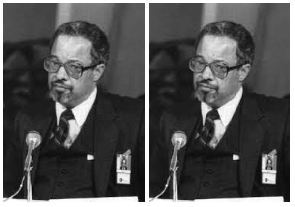 Arthur Bertram Cuthbert Walker Junior/Photo credit: Physics today
Arthur Bertram Cuthbert Walker Junior/Photo credit: Physics today
Without the tough stance and support of his mother as he pursued the subject he loved, he would not have made it into history books.
In high school, his chemistry teacher thought there were limited opportunities for black students who studied science, and sought to discourage the young scientist.
However, his mother, Hilda Walker, confronted the teacher with a warning, indicating that her son would study whatever he pleased and would prefer to leave his fate in his hands rather than in his words. Years on, it turned out Arthur B. C. Walker Junior’s mother was right.
Arthur pioneered the development of solar telescopes. These telescopes were used in filming the first-ever images of the sun’s outermost atmosphere in the late 1980s, making him one of the top scientists in solar research. He shocked the science community with the innovative telescopes he sent to space. Scientists were able to appreciate never seen images of the sun, documenting earlier pictures of the corona. He broke the barriers on how researchers could study the sun.
This became possible because of Arthur’s love for science. His mother noticed this affinity at an early stage and ensured he found himself in the right environment.
Since he was born in Cleveland in 1936, his parents provided him with the guidance to fast-track his dreams. His mother, for instance, changed schools for him at the elementary level when she received reports that teachers spent less time in the classroom to teach the children and used class hours to run personal errands.
She moved Arthur to a different school in another district which gave her son a promising start, according to the Post News Group. He was provided with books and given additional tuition in science-related fields to sharpen his understanding of the subject as he climbed the academic ladder. It was no surprise when his mother made him sit for the Bronx High School of Science entrance exam at an early age; he aced the exams and gained admission into the school.
During high school, Arthur demonstrated an exceptional understanding of physics. He decided to go all out despite earlier attempts to discourage him in the pursuit of this dream. His mother was once again present to help him take this dream higher. She encouraged him to enroll at the Case Institute of Technology in Cleveland. It was there he acquired his bachelor’s degree in physics with honours in 1957, and a master’s in 1958 and later moved on to the University of Illinois, Urbana-Champaign, to complete his doctorate degree in 1962.
He was immediately employed by the U.S. Airforce as 1st lieutenant and was placed in charge of the weapons laboratory, where he developed instrumentation for a rocket-launched satellite to measure Van Allen belt radiation in Earth’s magnetic field.
This became the launch pad for his future interest in space-based research. He proceeded to the space physics laboratory of the Aerospace Corporation in Southern California after he finished serving with the military. There, he began in-depth research in the sun’s atmosphere, first at ultraviolet wavelengths, and then x-rays using rocket-launched instruments.
Despite years of dedicated service to solar-based research, he was concerned with a gap in the study of the sun’s radiation. There was a growing appetite for a special telescope that could help in appreciating the radiation of the sun. No one explored the concept during the 1970s because such an endeavour was considered too risky to fine-tune. This caught Arthur’s attention to develop a telescope that made this possible to capture images of the sun. After achieving this feat, he helped more black physicists to earn Ph.Ds than any other single university in the US had been deliberate about.